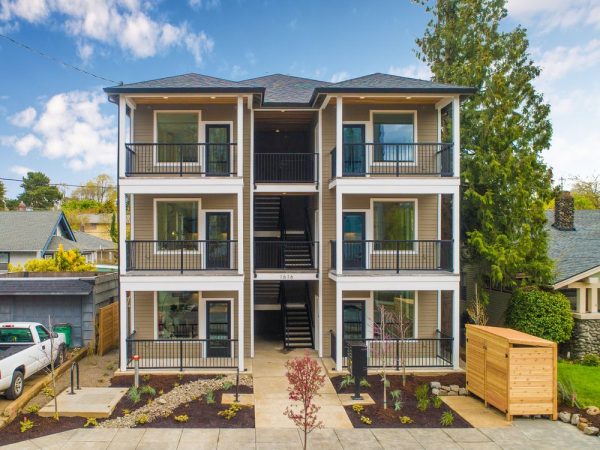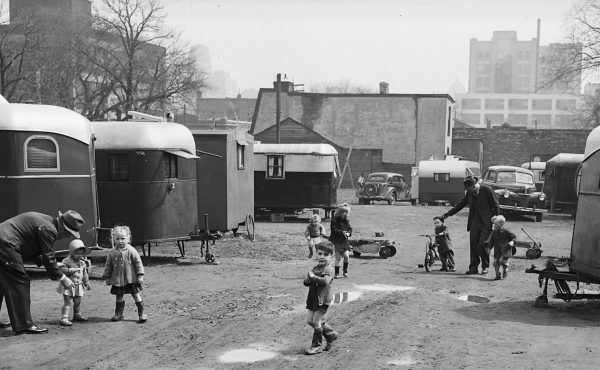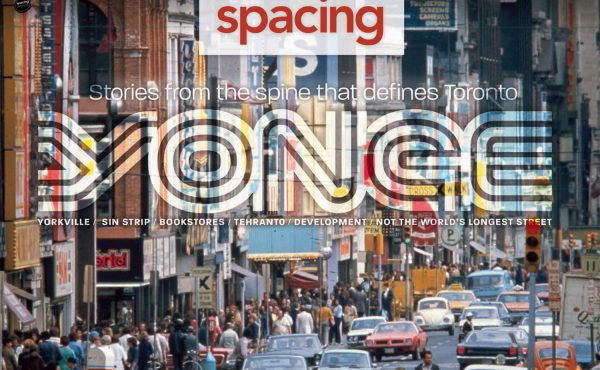When I look out my office window, trying to think up a lede, I find myself staring at the grey-stuccoed side-wall of a house kitty corner to mine, which was owned for a long time by a mobster of some repute. He was a nice enough man. His wife gave us home-grown tomatoes. We never borrowed anything and always gave them Christmas cards.
Eventually, his wife got too old for the stairs and our neighbour put the house on the market. The buyer was a guy who owned a small construction debris container company. As soon as the sale closed, he began turning the house into a triplex. In the middle of the project, said waste management entrepreneur was gunned down in his driveway, in Etobicoke, but his widow soldiered on with the redevelopment. There have been tenants in there ever since she finished, with no evidence of anything… other than people living in a neighbourhood.
Next to this house is a fourplex where Levon Helm apparently once lived. There’s a completely illegal three-storey apartment building down the block, a low-slung two-storey apartment a few doors east, and, around the corner, a couple of out-of-place Montreal-style walk-ups as well as a corner store re-purposed into several apartments.
Oh, and the mansions in Bracondale and Wychwood Park, not to mention all the preposterously over-priced working-class semis. Yet somehow, this community gets from one day to the next without the complete collapse of the social order or, indeed, property values.
My point here is not just about the fact that such very small-scale apartments can peacefully co-exist with single-family homes.
Their very existence within a relatively small radius — hardly unusual in the older parts of the city — suggests that at some point in the pre-WWII era, builders could make such projects pencil, as the saying goes — they had some capital and modest parcels of land, and were willing to take a risk. The plentiful supply of similar, albeit slightly larger, post-war apartments in the old City of York and older parts of North York further attest to the commercial and investment viability of this kind of housing, much of it built in the absence of highly prescriptive zoning regulations.
Council this week will get a chance to nose its way closer to a world where far more types of modest-scale housing could get built in Toronto’s expansive “yellow belt” neighbourhoods, this time in the form of a proposal from the planning department to permit sixplexes. There’s nothing magical about the number six, but city planners in recent months have heard lots of feedback from missing-middle builders that six units makes the math work for them.
The sixplex recommendation passed the planning and housing committee earlier in the month, but its success at council this week is by no means assured (Frances Nunziata is reportedly looking for an depth-charge-style exemption for lots with bungalows).
Under new chief planner Jason Thorne, the city has made a compelling case, offering schematics of various configurations and some interesting mapping that reveals how and where recently approved laneway suites, garden suites and multiplexes have been built (mainly in the near west end, as it happens).
The planning department also took stock of recent multiplex applications with a suspiciously large number of bedrooms and proposed tweaking the rules to prevent the development of what would become rooming houses (file under: homeowner anxiety).
Perhaps the most interesting piece of analysis produced by the planning department in support of the proposal is a report estimating the uptake in missing-middle projects, including those that will be permitted on major streets, over the next 25 years. Using projections based on local land economics and the experience of other cities that have approved various forms of neighbourhood up-zonings, the city estimates there will be almost 164,000 new units that fall into the missing middle category, about half in the form of multiplexes in residential neighbourhoods.
Some context: the city’s goal is to add 285,000 new dwellings by 2031. As of Q1 2024, Toronto has created almost 78,000 new homes, which means we’re more than a quarter of the way to that target. This year, however, the growth has been anemic: just 4,500 units.
The planning department projected that the market would produce about 55,000 missing middle-type units by 2031, and then continue to accelerate through 2051. In other words, those missing-middle type buildings — everything from laneway suites to sixplexes to small apartment buildings — could account for a fifth of Toronto’s housing needs over the next half decade. The city’s analysis also shows clear growth in this scale of gentle intensification since 2011 — further proof that the market not only exists but is beginning to gain momentum.
Opponents of intensification frequently make the mistake of imagining rapid changes within their neighbourhoods. And this phenomenon is not unknown. In the 1980s, Committee of Adjustment decisions allowing post-war bungalows on deep lots to be replaced by large homes with sunken garages rapidly transformed entire streets in parts of North York. The value of those tiny dwellings plunged to zero in the face of land speculation.
Quite apart from the moral panic about tenants having the temerity to move in to residential neighbourhoods, the planning department’s analysis shows that this brand of wholesale development won’t happen — there’s not enough capital, and the value of existing single-family homes won’t collapse in the face of some feared tsunami of multi-plexes.
Finally, the elephant in the room: the condo real estate bubble in Toronto has burst and isn’t coming back anytime soon. Developers can’t launch new projects, even if they have the zoning and permits in hand, because no one is investing in pre-sales, especially the tiny, unliveable units that flooded the market and are now under water. What’s more, even residential real estate prices are down, with sluggish re-sales and an end to bidding wars.
In other words, if there was ever a time — ever — for the city to green light a new type of modest rental housing that is economically feasible, we’re in the thick of it. Flat land values make these projects increasingly attractive. The construction trades will need the work. The small-scale developers interested in missing middle housing are now out there, building.
Many Torontonians — young people, those working in critical professions that don’t provide enough income for down-payments, etc. — want housing that is humanely scaled, street-oriented, and replenishes neighbourhoods that have been losing population for years.
As ever, there will be council naysayers and their mouthpieces determined to go to war against sixplexes by ordering up more studies, carrying out endless consultations, fussing about parking, advocating for bespoke exceptions, etc.
Toronto council would be foolish in the extreme to miss this generational opportunity. Mayor Olivia Chow needs to whip the vote and bring home a yes. The decision, in my view, is a legacy-maker in a city that has lost its way when it comes to housing. Let’s not waste the moment.






4 comments
Thank you for the calm and thorough discussion on the topic of infill/multi-plex housing. One topic that got breezed over at the end, however, was the reference to parking. Ironically the photo at the head of the article visually makes the point – where do the residents of the 6 new flats park their cars? And note, in the Etobicoke burbs, everyone needs a car given the lack of accessible public transit. I’m very supportive of creating more living space for our growing population but want to be realistic about vehicle accommodation.
Will more people be a boon to the property taxes homeowners pay? Seems like it might bring more people on board. There also might be benefits to extended families or to boomers looking to downsize. They could buy/rent ground floor.
I think that if I lived in that little arts and crafts style house on the right of your illustration, and someone built that visual obscenity next door, I would have to be restrained from taking some ill-advised action against the owner. If that is what the future promises, I will be mourning the loss of our beautiful late 19th century to early 20th neighbourhoods. Surely there must be a way to move forward on this without that cost. Maybe some Aesthetic Police?
I have lived in downtown TO (King West) in the past but now live in the burbs. Where I am, the single-family houses were built in the 70s. Just north of me, they were built in the 30s. It’s close to busses, and near the GO. This area is one that has a hate for small multiplexes. But if someone tears down a 1500 sq ft bungalow or storey-and-a-half and build a giant Mc mansion right to the allowable setbacks, filling the lot with house and driveway, and towering over the rest of the neighborhood, that seems to be fine?? There are 3 or 4 egregious examples 2 blocks from me, built in the last 3 years. I don’t get it.